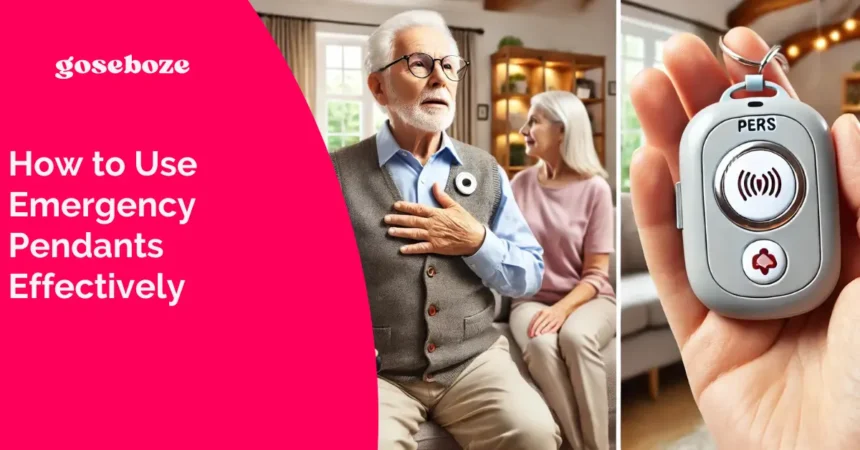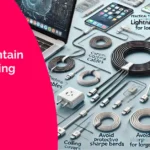Pendants for emergencies, often called personal emergency response systems (PERS), are invaluable tools for ensuring safety, particularly for the elderly, individuals with medical conditions, and those who live alone.
These devices provide immediate access to assistance in case of falls, medical emergencies, or other urgent situations. To maximize the benefits of an emergency pendant, it’s crucial to understand how to use them effectively. Here’s a comprehensive guide on utilizing emergency pendants to their fullest potential.
Understanding the Basics
Emergency pendants are typically worn around the neck, wrist or as a clip-on device. They come with a button that, when pressed, sends an alert to a monitoring centre or directly to designated contacts. Some advanced models also feature automatic fall detection, GPS tracking, and two-way communication capabilities.
Choosing the Right Device
- Assess Your Needs: Before selecting an emergency pendant, consider the user’s specific needs. Mobility, health conditions, and lifestyle should influence your choice. For instance, a pendant with fall detection is ideal for someone prone to falls, while GPS tracking is beneficial for those who may wander or get lost.
- Evaluate Features: Look for features that suit your needs, such as waterproof designs for those who might wear them in the shower, long battery life for continuous protection, and two-way communication for direct interaction with the monitoring centre.
Proper Usage
- Wear It Consistently: The pendant should be worn at all times, especially during activities that pose a higher risk, such as showering, walking, or when the user is alone. Consistency ensures that help is just a button presses away whenever needed.
- Test Regularly: Regular device testing is essential to ensure it functions correctly. Most providers recommend testing the pendant once a month. This can be done by pressing the button to connect with the monitoring centre and confirming that the alert was received.
- Educate the User: Ensure that the user knows how to operate the pendant, including how to wear it, charge it if necessary, and what to expect when the button is pressed. Familiarity with the device can reduce anxiety during an actual emergency.
Read Also: The Importance of Early Intervention in Preventing Addiction
Maintenance and Monitoring
- Keep it Charged: If the pendant is battery-operated, ensure it is charged regularly. Some devices come with low battery alerts to remind you when to recharge.
- Update Contact Information: Ensure that the contact information for the monitoring center or designated contacts is up to date, including phone numbers and addresses. Prompt communication is crucial in emergencies.
- Check for Updates: Some emergency pendants have software updates or new features. Watch for these updates to ensure your device has the latest technology and functionalities.
Responding to Emergencies
- Stay Calm: Staying calm is crucial in an emergency. Press the button on the pendant and wait for a response. The monitoring centre will assess the situation and dispatch the appropriate help, whether contacting emergency services or notifying a family member.
- Follow Instructions: Once connected to the monitoring centre, follow their instructions. They are trained to handle emergencies and will guide you through the process.
Additional Tips
- Involve Family and Caregivers: Ensure that family members and caregivers know the emergency pendant and how it works. They should also know the procedure for responding to alerts and what to do if they receive a call from the monitoring centre.
- Consider Backup Plans: While emergency pendants are reliable, having a backup plan is always wise. This could include having a list of emergency contacts, knowing where the nearest hospital is, and having a mobile phone nearby as an additional safety measure.
Conclusion
Emergency pendants are life-saving devices that provide peace of mind and security to users and their families. By choosing the right device, ensuring proper usage, maintaining the equipment, and having a clear response plan, you can use emergency pendants effectively to enhance safety and independence. Remember, the key to maximizing the benefits of these devices lies in consistent and informed usage.

Isabella Fox is a seasoned entertainment journalist with a flair for capturing the essence of celebrity culture. Armed with a Journalism degree and a rich history of red carpet interviews, her articles offer exclusive insights into the lives of the stars. Trusted in entertainment circles, Isabella’s work is a staple in major magazines and online platforms. Beyond the glamour, she champions animal rights and loves outdoor adventures.







